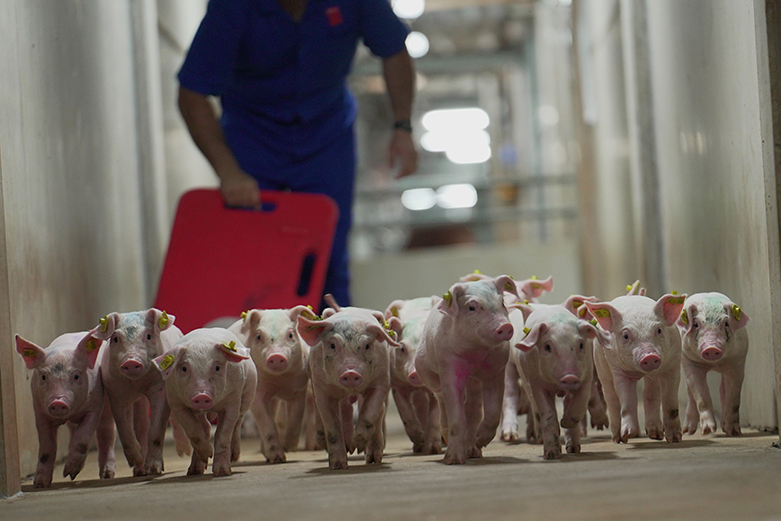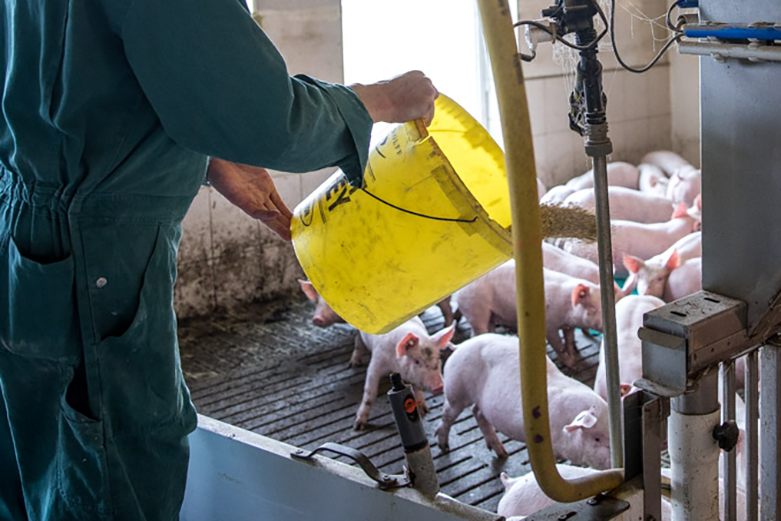WEANING OF PIGS: OPTIMAL MANAGEMENT AND NEW CHALLENGES – an 8-part series
- What happens at weaning
- Objectives at weaning for a sow
- Piglet management around weaning
- Management of piglets after weaning
- Feeding of the sow
- Piglet feeding at weaning
- Age at weaning
- Types of weaning according to the age of the piglet.
The authors:
Emilio Magallón Botaya – Veterinarian specialising in Economics and Pig Production.
Sara Beitia Delgado – Agronomist Engineer – La Almenara Farm
Pablo Magallón Verde – Technical Service PIC
David Roldan Feringan – Veterinarian-Granja La Almenara
Patricia Prieto Martínez – Veterinary Service Inga Food
Images provided by the authors
Age at weaning has important implications on the quality of the piglet, the longer the duration of lactation, the higher the quality of the piglet and the better prepared for the post-weaning phase. On the other hand, a very high weaning age leads to longer lactation durations and fewer cycles per sow per year.
Age at weaning
There are numerous factors that influence the optimal time of weaning, which will be reviewed in this and the last chapter, together with the different weaning ages.
Evolution of age at weaning
In pigs in the feral state, lactation is very long, as we have already seen in chapter 1 of this course.
Until the 60s and 70s of the last century, weaning was done at 5-6 weeks. With the improvement of facilities and piglet feed in the 60’s and 70’s, weaning was done at around 21 days.
With the emergence of PRRS (Porcine Reproductive and Respiratory Syndrome) in the 1990s, the theories and principles of phased production were developed, which led to Isowean. Weaning at a maximum of 21 days was advised to control vertical transmission of many diseases (table 1).
Table 1: Recommended weaning ages to eradicate different diseases. Adapted from Muirhead and Alexander (1997).
| Infection/disease | Age (days) | Treatment/Measures for safeguarding |
|---|---|---|
| Infection/disease | Age (days) | Treatment for increased health assurance |
| Actinobacillus pleuropneumoniae (APP) | <28 | Medication |
| Aujeszky Virus | 21 | Vaccination |
| Bordetella bronchiseptica | 5 | Medication + Vaccination |
| Influenza Virus | 16 | None |
| Mycoplasma hyopneumoniae (Mhyo) | 10 | Medication + Vaccination |
| Pasteurella multocida (toxigenic) (RA) | 8-10 | Medication + Vaccination |
| CVRP | <14 (np) | None |
| PRRS Virus | <16 (nr) | None |
| Coccidia | – | Not posible |
| E. coli | – | Not posible |
| Endoparasites | <14 | Medication |
| Parvovirus | <28 | Vaccination |
| Swine dysentery | <21 | Medication |
| TGE | 21 (np) | None |
However, at the beginning of the 21st century, the trend in many countries is towards the widespread use of hyperprolific sows of Danish origin, which give birth to more piglets, but with lower birth weights. In this way, longer lactation periods are required, around 28 days, to wean piglets at a higher weight and be more viable at weaning. For example, the current trend in Spain is to wean at around 24-26 days on average.
Factors that determine the age at weaning
1. Weight
With the generalisation of hyperprolific lines, weaning weights have decreased, so it is important to increase the age at weaning to achieve a higher weight. It is recommended not to wean below 6-6.5 kg on average, and individually never below 5 kg.
In hyperprolific sows, as litter size increases, individual weight decreases by about 30 grams for each additional piglet born. Thus, in an experiment carried out by the authors of the article where more than 500 litters were weighed, litters of 11 piglets weighed on average 1,539 g/piglet and litters of 20 piglets weighed on average 1,271 g/piglet.
2. Uterine involution
Weaning below 21 days implies a worse uterine involution (figure 1) and is therefore not advisable as it will result in lower productivity in the next cycle (figure 2).


3. Banded management system
Some batch management systems require weaning at 21 days, which makes it difficult to raise the age at weaning and to be able to adopt and use sows as nurse sows.
4. Staffing and farm organisation
The age at weaning is sometimes conditioned by the availability of staff on the farms and their work organisation.
5. Number of farrowing pens
Hyperprolificacy implies more fostering and more nurse sows, so we have to increase the number of farrowing pens to about 26/28 % of the total number of sows in order to be able to work with larger litters. Here it should be noted that the age at weaning on these farms is on average 2-3 days less than the average lactation age of the sows, because of double lactation of nurse sows.
6. Sanitary
Health and disease eradication and control programmes can influence the age at weaning (table 1).
7. Genetics
It has already been mentioned on several occasions that working with hyperprolific lines implies lower birth and weaning weights, so it is advisable to carry out longer lactations to improve weaning weights.
The genetics of hyperprolific lines are increasingly conditioning the age at weaning as prolificacy is closely linked to birth and weaning weights.
Diese Artikelserie wurde erstmals in der Fachzeitschrift SUIS veröffentlicht.



